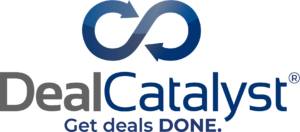February 14, 2024 - This article was first published in the 2024 winter edition of Loans Magazine, which can be accessed here. The ESG Integrated Disclosure Project (ESG IDP)—launched at the end of 2022—is a first-of-its-kind effort to harmonize ESG information requests and ESG reporting in credit transactions. The ESG IDP brings together leading lenders (asset managers and investors) in the private credit and syndicated loan markets to improve the availability, reliability and comparability of ESG information on private companies. Crucial to its efforts is taking a proportionate approach to ESG reporting and offering a Template that can serve as an industry standard. The ESG IDP is governed by its Secretariat (ACC, LSTA and PRI) and an Executive Committee of committed alternative asset managers, credit rating agencies and investor associations. For the inaugural term of the Executive Committee Michael Kashani, Head of ESG Credit at Apollo Global Management serves as Chair and Jeffrey Cohen, Managing Director and Head of ESG & Sustainability at Oak Hill Advisors serves as Vice Chair.
The ESG IDP recently celebrated its first birthday. This article looks to educate on the ESG IDP and also summarizes the key successes for the ESG IDP last year.
In its first year of existence the positive reaction to the ESG IDP’s efforts has been tremendous. Lenders, borrowers, investors, arrangers, data providers and private equity sponsors across the market are now using the ESG IDP’s Template to improve data collection, borrower engagement, portfolio monitoring and lender reporting processes. As evidence of market participants embracing the IDP, the IDP has welcomed new members on its Executive Committee and various market participants have communicated their support for the IDP by incorporating the ESG IDP Template within relevant parts of its business and identifying as a supporter on the ESG IDP website. The aggregate AUM of ESG IDP supporters is $7 trillion and growing.
The growing ranks of supporters are becoming deeper and broader. The Secretariat has welcomed four credit rating agencies to the Executive Committee—Fitch, KBRA, Moody’s and S&P Global. The support of the IDP by these rating agencies and their adoption of the Template in their relevant practices is powerful. On the investor side, the Investment Consultants Sustainability Working Group—US (ICSWG-US), a collaboration of 17 investment consulting firms, was an early member of the Executive Committee.
Further highlighting the global reach of the IDP, the Asia Pacific Loan Market Association (APLMA), Loan Market Association (LMA), and European Leveraged Finance Association (ELFA) are all supporting organizations. Given the prevalence of private equity portfolio companies in the leveraged lending markets, the ESG IDP has sought to bring efficiency to borrower reporting by intentionally aligning with the ESG Data Convergence Initiative (EDCI), the general partner- limited partner initiative aimed at standardizing and collecting ESG data in private equity. The ESG IDP is pleased to also have an EDCI representative on the Executive Committee. An update to the Template to further highlight this alignment is forthcoming.
ESG IDP FAST FACTS
Why was an initiative like the ESG IDP needed?
Many borrowers in the loan market are privately- owned companies on whom there is little publicly available information. Where third party ESG data providers provide broad coverage of public companies, that is not the case for borrowers in the loan market. Therefore, ESG information needs to be specifically requested by lenders as part of diligence materials. To address that first issue, the LSTA published its ESG Due Diligence Questionnaire—Borrower (DDQ) in 2020. Despite the progress sparked by the LSTA’s DDQ and its subsequent uptake after its first update in 2021 ESG reporting by borrowers in the private credit and syndicated loan markets has not advanced as quickly as necessary to meet growing investor and regulatory demands. Borrowers also are frustrated by a seemingly opaque, random and inefficient reporting process which looks for specialized information, i.e., ESG information, when they come to market—a time where resources are constrained by the pressure (and often accelerated time table) of closing a loan.
How will the ESG IDP advance ESG reporting?
The ESG IDP addresses the interests and needs of all loan market stakeholders through industry-wide collaboration. Recognizing that borrowers likely wish to keep their ESG reporting, like financial reporting, limited to those parties that are its lenders the ESG IDP offers its Template which is completed and shared by the borrower only with transaction parties. The ESG IDP does not collect any data. The ESG IDP Template establishes a global baseline of ESG information on borrowers that covers both qualitative and quantitative data on those ESG factors that lenders consider most material. Furthermore, harmonizing lender requests for ESG information and identifying those ESG factors which are most material to lenders (and those ESG factors that will become increasingly material) outlines clear, consistent expectations for the borrower community. Borrowers can then effectively dedicate resources to developing their ESG reporting capacity. Finally, ESG reporting by borrowers through a standardized template will allow for lenders to receive more consistent, comparable data.
Who benefits from using the ESG IDP Template?
Everyone!
- For investors: the ESG IDP template will improve the consistency of disclosure to investors, enhancing their ability to identify industry-specific ESG risks in their credit portfolios and compare data across alternative asset managers more consistently.
- For borrowers: the ESG IDP template will provide borrowers with greater certainty on the ESG indicators that are most relevant to lenders. This will allow borrowers to concentrate on these disclosures rather than respond to a multitude of similar questionnaires. Borrowers further benefit from having transparency into the information requests that they will receive, i.e., the Template, and can therefore complete the requested information before bringing a loan transaction to the market—avoiding the deal time crunch they have experienced.
- For credit fund managers: the ESG IDP template will support the ability of credit fund managers to engage with borrowers on disclosure as well as develop efficient investor reporting processes.
How do you complete the ESG IDP Template?
The Template is a downloadable macro-enabled Excel file. Many educational materials are available on the ESG IDP website. The ESG IDP Secretariat has created an educational resource for prospective users of the Template—the ESG IDP Tutorial. This 15-minute “How To” video breaks down and explains each element of the Template and highlights explanatory notes and signposts built into the Template.
How does the ESG IDP Template get used?
The Template was designed for use in credit transactions. However, market participants have identified several use cases, including using the Template for data collection, borrower engagement, portfolio monitoring and investor reporting processes.
Lenders may first request the completion of the Template as part of their diligence practices at the pre-investment/loan origination stage. The completed Template will be shared via posting to the relevant data room, Dropbox or other means for sharing diligence materials. While it is expected that borrowers will share the completed Template during the diligence phase of loan origination, as noted above, borrowers may—and are encouraged to—choose to prepare the Template in advance of beginning a loan origination. Borrowers should also understand that lenders expect that many borrowers will only be able to partially complete the Template. Borrowers are encouraged to complete as much of the Template as they can with a view to expanding their reporting capacity with time.
Again, a template does not need to be completed in its entirety to be shareable. Borrowers are encouraged to use this Template as a guide as they plan and develop their reporting capacity. One of the unique aspects of the Template is the sequencing of questions based on lenders’ current and future expectations. The Template identifies core general questions (i.e., current lender expectations), optional general questions and industry-specific questions (i.e., aspirational lender expectations).
What does this mean for the LSTA’s ESG Due Diligence Questionnaire – Borrower?
The LSTA has been clear that the launch of the ESG IDP is the next evolution in ESG reporting for the private credit and syndicated loan markets. Therefore, the LSTA fully supports use of the ESG IDP’s Template and has retired the LSTA’s ESG Due Diligence Questionnaire – Borrower.
For additional information, please refer to www.esgidp.org. For questions, please contact Tess Virmani.






